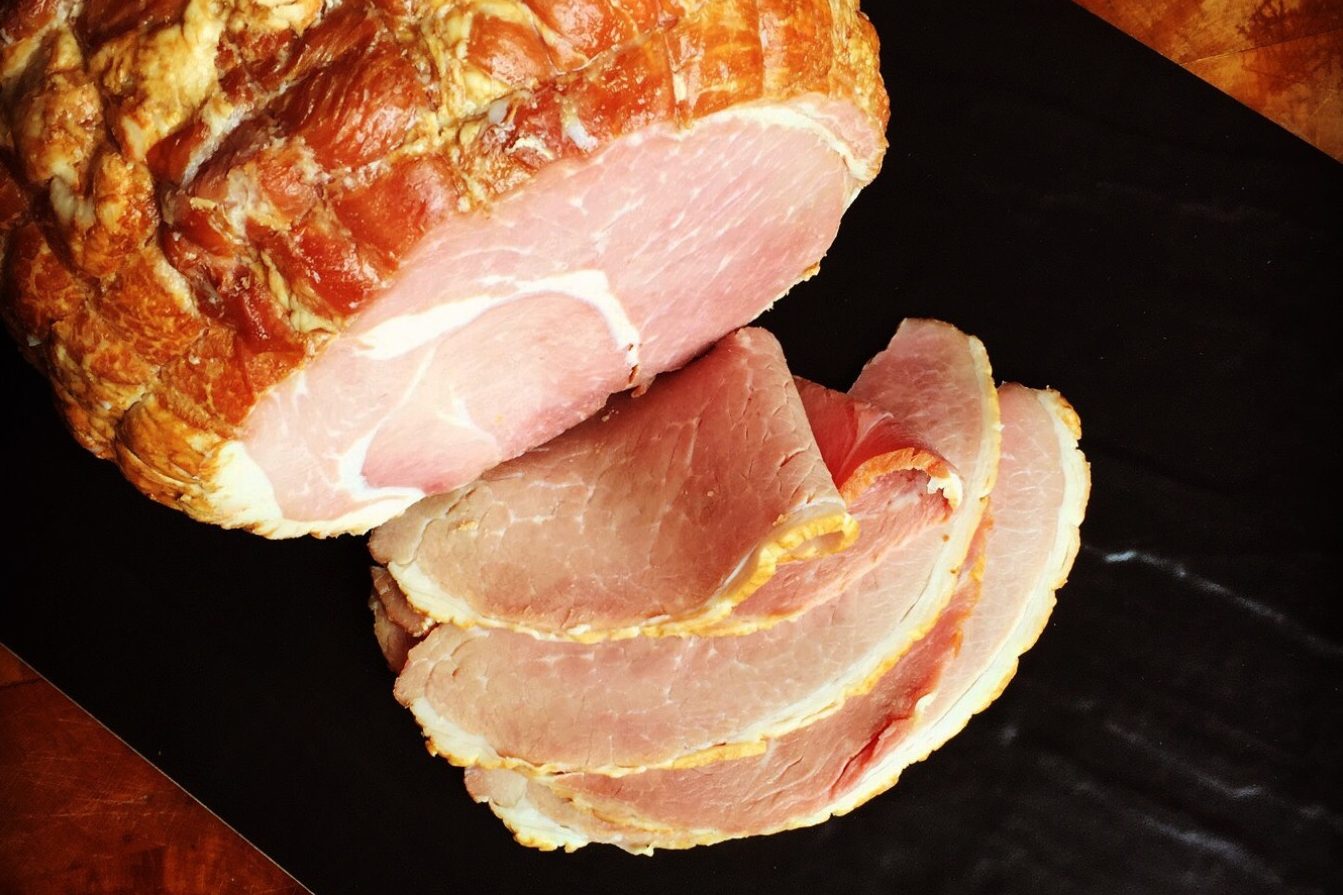You probably remember the story of the country mouse and the city mouse, but do you know the tale of the country ham and the city ham?
Country ham, sometimes confused with and even sold as prosciutto, is commonly found below the Mason-Dixon line and typically produced by dry-curing a slab of pork with salt, sugar and other spices before allowing it to hang for months as moisture is replaced by flavor. Dense, very salty and sometimes smoked for extra flavor and color, country hams are usually simmered in a sweet liquid or cooked up in a skillet before being consumed, even though the curing process basically renders them ready to eat.
The 10 Best Places to Buy Bacon Online
From artisanal bacon-of-the-month clubs to the pork equivalent of Kobe beefCity ham (also known as prepared ham), on the other hand, is cured by being submerged in or injected with a solution of sugar, salt, sodium nitrate, nitrites and other seasonings before winding up in the frozen section of your local grocer. Sold both bone-in and bone-out, country hams are typically smoked and almost always fully cooked, so prep is fairly simple as long as you have an oven, some variety of glaze and possibly some pineapple slices.
There’s no pineapple required for the city swine offered by Zingerman’s, which is now in its fourth decade of operations, as the Ann Arbor institution sources its ham from heritage Duroc and Berkshire hogs that have been butchered and prepared by Smoking Goose Meatery in Indiana. Never given antibiotics or hormones, the heritage breed pigs produce pork that is atypical from your standard city ham, according to Zingerman’s head of marketing Brad Hedeman.
The biggest reason? The hogs themselves. “Heritage breeds date back to before the Industrial Revolution. They are hardy, muscular pigs that are accustomed to living outside and don’t get too hot or too cold,” Hedeman tells InsideHook. “They aren’t bred to be fatter and grow faster. They’re animals that are out there rooting in the trees, digging up grubs and eating berries. They’re not separated quickly from their mothers. We’re going to eat them, but I think it’s better for these animals. We’ve got morals, but what it comes down to really is a happier animal that’s treated well just tastes much better.”
And combining two types of happy animals tastes better still. “Smoking Goose likes using whole muscles from the leaner part of the animal as opposed to taking four different mismatched pieces and putting them together,” Hedeman says. “They pick the Duroc hogs because they find the marbling of the meat is better. The Berkshire has always been celebrated for having this cap of fat that makes it more moist and tender during the smoking process and mouthwateringly succulent and delicious at the end.”
As for Smoking Goose’s 12-hour smoking process, it takes place using whole cherry and hickory logs after the heritage hams have been brined for almost a week in a blend of sea salt, cane sugar, bay leaves, cloves, garlic, juniper berries and a mixture of spices before being hung up to dry for almost 24 hours. The end result is a ready-to-eat ham that simply has to be heated and served.
“A heritage breed might take two-and-a-half years to raise instead of 10 months. It takes more time not only in the raising of the animals, but in the processing of the hams,” Hedeman says. “It’s a bigger investment and takes more effort, but it pays off in terms of the flavor. It’s a weird thing to say, but some of these breeds have been resurrected from the brink of obscurity because they taste good. If you want to save an animal, make it taste good. People will want that animal around.”
Need an XL stocking stuffer? Head to Zingermans now. (Or head to another online retailer like Snake River Farms)
Join America's Fastest Growing Spirits Newsletter THE SPILL. Unlock all the reviews, recipes and revelry — and get 15% off award-winning La Tierra de Acre Mezcal.
